Why not give your garden a touch of the baroque? The baroque movement is thought to have originated in 17th-century Italy before spreading to the rest of Europe, where it influenced painting, sculpture, architecture, music, literature and even garden design. Baroque colors are very distinctive: deep shades such as dark blue, purple, aubergine, burgundy and ruby red, often combined with gold and black to create a sumptuous feel.
It’s not just the strength and vivacity of the colors used in baroque-style plantings, but also how these colors are juxtaposed. Most gardeners are lucky to have such a wide variety of hues in our plant palette, and though preference for what we plant tends to be very personal, perhaps we could all be more adventurous and experiment with using strong colors in a different way.
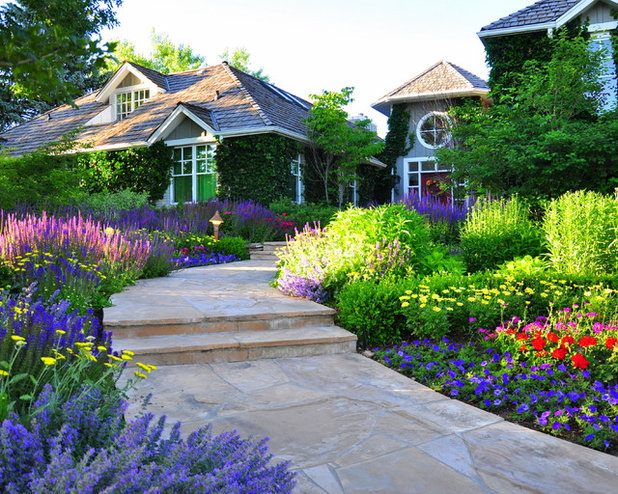
Designscapes Colorado Inc.
I know that mixing bright colors in planting schemes is not for everyone. Designers’ use of pastel colors and monochromatic plantings in recent decades has influenced us to adhere to a tightly reduced color scheme in our gardens. But is it such a leap to break away from muted colors to enjoy those bright, rich tones that we love to decorate our homes with during deepest winter in our gardens for the rest of the year?
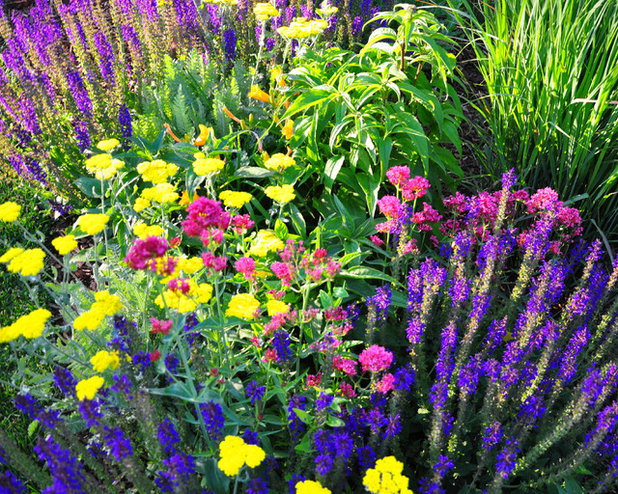
Designscapes Colorado Inc.
One of the problems with monochromatic planting schemes is that there can be a scarcity of blooms at certain times of the year. We have a wide range of flower colors to choose from throughout the year; why limit ourselves to one or two?
Taking our cue from the baroque, we can select whatever color is available each season and mix and match as required. All the planting skills we use in monochromatic schemes — balance, repetition and rhythm — can now be employed to create a jewel box of color.
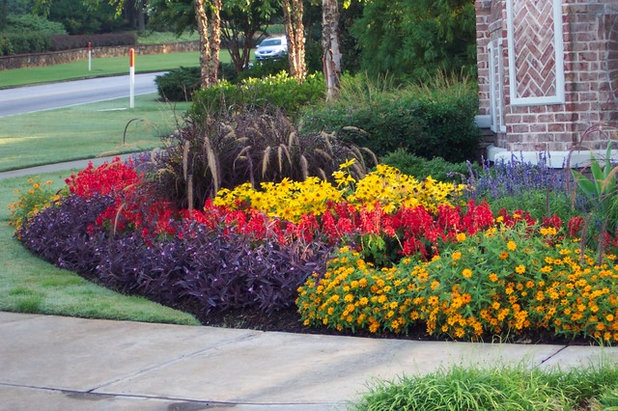
jenny_hardgrave
Be bold with your seasonal planting. Perhaps the easiest way to try out bold, baroque planting schemes is to start with a seasonal planting using the bright colors of annuals and half-hardy annuals.
The purple edging of the purple heart (
Setcreasea purpurea) in this planting gives a depth to the bright colors of the deep red salvia, golden zinnia and bright yellow rudebeckia.
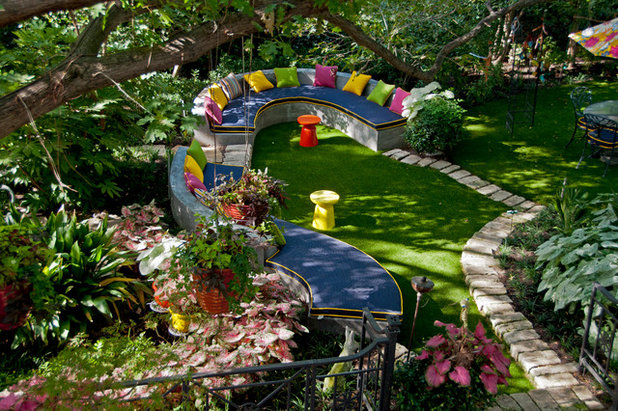 Use garden accessories to add a baroque touch.
Use garden accessories to add a baroque touch. The bench seat and throw cushions bring this garden to life without impeding on the restrained coloring of the garden. If you’re not brave enough to change direction from your comfortable pastel planting, garden accessories are a good place to start.

a Blade of Grass
One of the favorite tricks of baroque decoration in the past was the addition of gold to contrast a brighter color and to create a buffer between them. We tend to use the same idea when decorating for Christmas; the addition of gold baubles brings to life the other colors.
Here the use of bright yellow garden furniture brings to life an otherwise traditionally designed and planted courtyard garden. The muted blue of the squares of catmint (
Nepeta x
faassenii)
are brought to life with the overplanting of deep pink roses and
Allium hollandicum ‘Purple Sensation’, but the touch of yellow in the furniture really completes the picture.
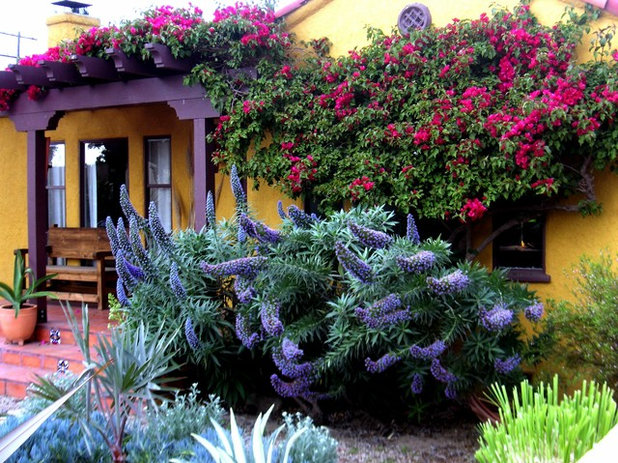
CARL BALTON + ASSOCIATES
Link the house and garden with strong colors. If anything shouts baroque, the simple yet stunning planting against the complementary coloring of this house does.
We can see how the yellow again creates the buffer between the strong colors of the mauve Pride of Madeira (
Echium candicans), the cerise bougainvillea and the dark-purple porch woodwork.
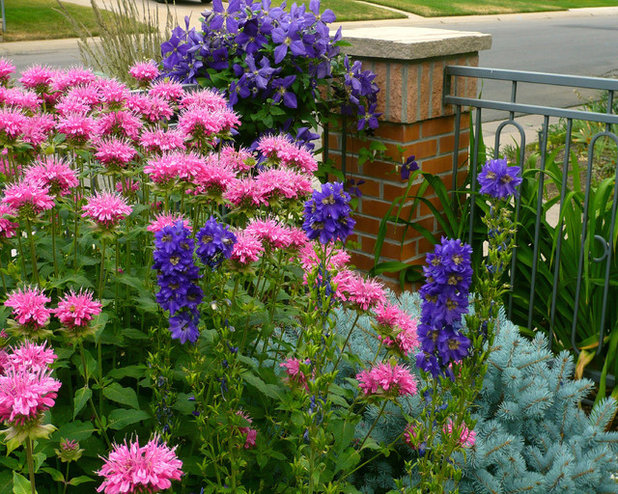
Ivy Street Design
Baroque planting is built on the interaction of strong colors combined with different shapes and plant heights.
Though pink is not a traditional baroque color, here the pink of the Monada really reverberates against the dark blue of the delphinium and the purple of the clematis.
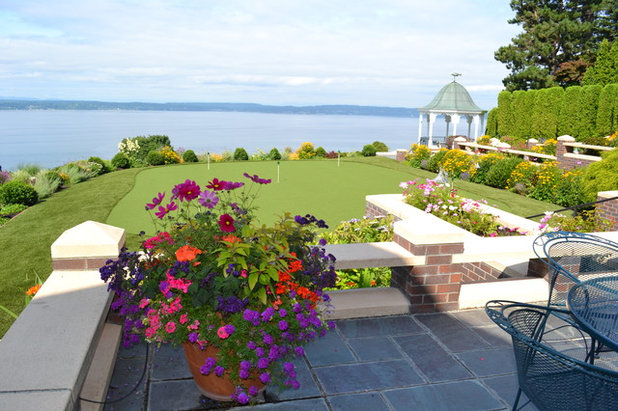
Classic Nursery & Landscape Co. / Alan Burke, asla
Lose inhibitions to create the perfect baroque-style planter. I suppose the planted container has been the natural home of baroque-style planting for many years. Here we tend to lose our inhibitions, planting any colors we fancy together, allowing them to fight or blend as the mood takes.
Why not this year forget those planting schemes with soft pastel colors and be brave and plant with bright baroque colors?





